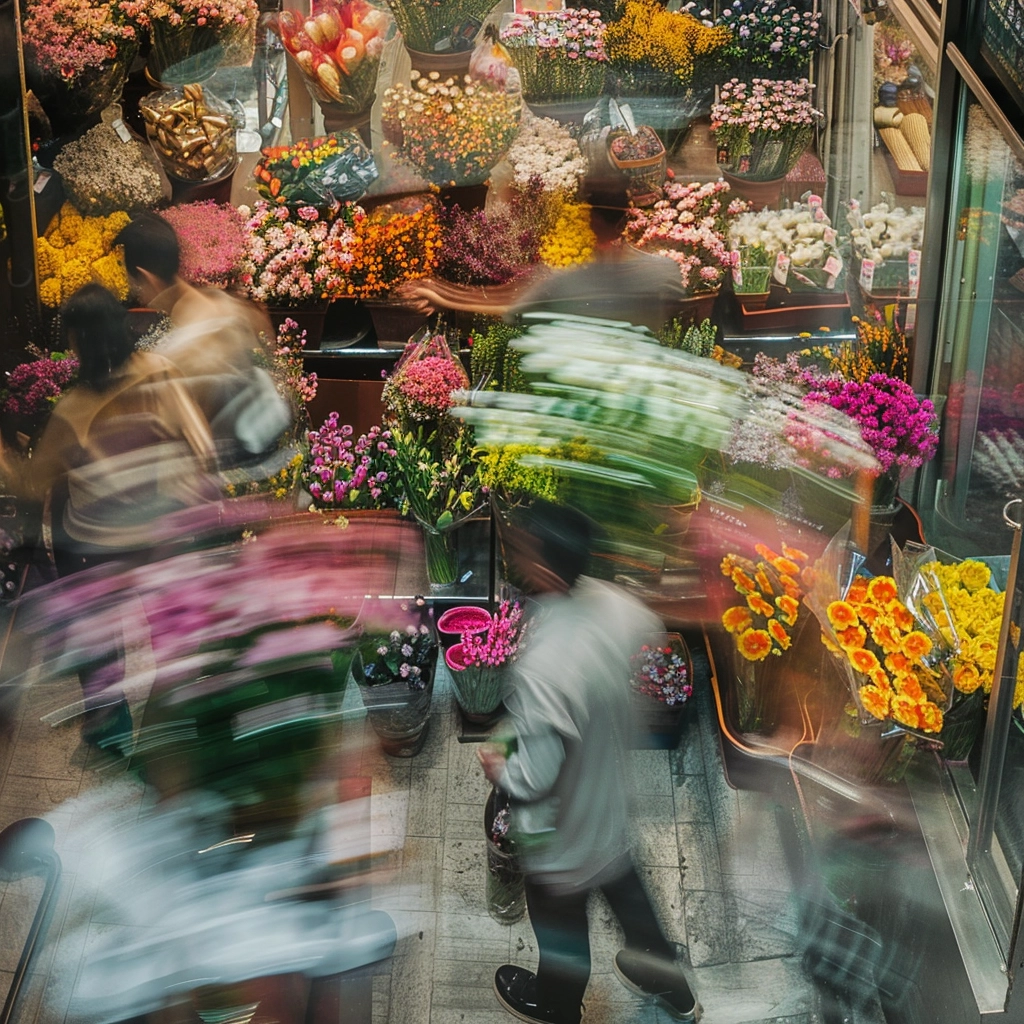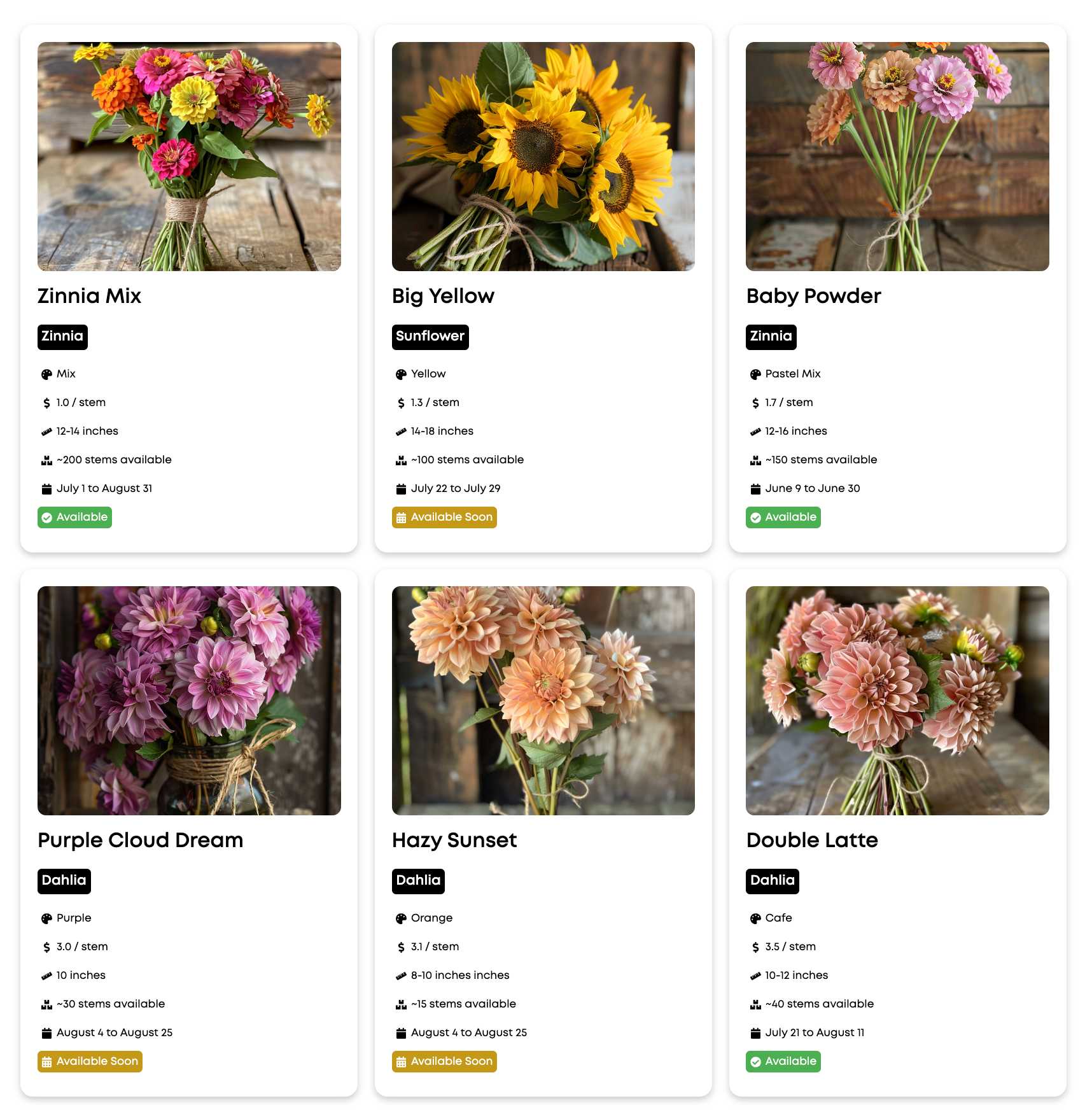
As a first-year flower farmer, it can sometimes feel like planning and growing are the easy part – compared to the daunting task of selling your flowers, and most importantly earning a profit.
Most beginner flower farmers start by selling arrangements or bunches within their local network, and then via social media directly to customers in their community. This is a great way to start, but pretty soon you’ll discover the challenging logistics of managing customer service, coordinating pickups and deliveries and marketing your farm to new customers – all while trying to run a flower farm! These tasks add up, especially when the revenue from each order is relatively low.
As daunting as it might seem, selling to florists – even in your first year – can be an absolute game changer. While you may price your flowers slightly lower, selling a high volume of blooms to a single customer can be far more profitable and leave you more time to grow your farm. It’s also a recurring revenue stream that’s far more simple and reliable than one-off purchases from social media customers requiring time and money for packaging, co-ordination and delivery.
Partnerships with local florists not only help stabilize your revenue, but also offer a platform for showcasing the quality and variety of your blooms to grow your direct-to-consumer business too.
We’ve compiled a few important steps to keep in mind when selling to florists as a new flower farmer.
Personal Outreach

Florists in your area aren’t going to magically discover your new farm and contact you to place an order – they likely don’t even know you exist! That’s why – as intimidating as it might be – you have to make the first move.
Find Florists: The first step is to find local florists. A simple internet search will give you a list, but it can be valuable to visit each florist’s website to learn more about them. Targeting your efforts towards more boutique or local-first florists can be more rewarding in the end.
Make the First Move: Once you have a list of florists, it’s time to get to work. Don’t hesitate to pick up the phone or, better yet, visit your target florists in person. Introduce yourself, provide a business card and talk about varieties you’ll be growing. These conversations can be especially helpful while you’re still in the planning phase of your farm, as florists often have requests for local flowers that they cannot easily order from large-scale, international suppliers. A face-to-face meeting can make a memorable impression and start building a rapport that’s hard to achieve via phone or email.
Tell Your Story: While you’re at it, share your story! Talking about your journey into flower farming, your farming practices, and what makes your flowers stand out can help differentiate you from other farmers and keep your name top-of-mind.
Free Flower Samples

One of the main concerns florists might have, especially from a new grower, is the quality of your blooms. Everything from stem length to harvesting at proper maturity and storage can impact the quality of flowers – and trusting a new farmer can be a challenge for florists who need reliable, high quality blooms. While it’s not usually a good idea to give flowers away for free, dropping off a small sample of blooms to showcase what a florist can expect from you will pay off massively in the long run.
Generosity Pays Off: Bringing in free blooms – perhaps a dozen stems – allows florists to see and touch the quality of your flowers, building trust in the blooms you produce.
Timing Is Everything: Deliver samples when they’re at their freshest and, almost more importantly, at a time when the florist isn’t too busy. You can use this as a second opportunity to network and build a relationship after your initial outreach.
The Availability List

You’ve built a relationship with a local florist, delivered samples, and now they’re ready to be a customer. However, they need to know what you have available and when! That’s why having an Availability List (sometimes called a Fresh List) is so important. This should include all of the varieties you’re growing along with images and when they will be available. It should easily accessible; some farmers will send an email every week while others will publish it online with Google Sheets or Florlist. One thing is for sure – having an up-to-date availability list is vital!
Keep It Updated: Use free tools like Florlist, Google Sheets, other free resources to maintain an up-to-date list of available flowers. This transparency helps florists plan their inventory and designs in real-time. While a weekly email or physical list can be nice, an always up-to-date list that can be accessed and updated at any time is certainly preferred.
Easy Access: Ensure your list is easily accessible online, where florists can check your offerings in real-time. Any reduction in friction to place an order will result in more sales. You can create a custom link with Florlist that’s easy-to-remember – simply your-farm-name.florlist.com and they’ll be able to instantly view your up-to-date inventory.
Underpromise and Overdeliver

There’s one problem with selling to local florists – there aren’t that many! That’s why it is absolutely essential to maintain an excellent reputation and keep these relationships strong. One bad or undelivered batch of blooms can have real consequences for both the florist and for your future business with them – not to mention your reputation in the community.
Set Expectations: Always be conservative in your estimates regarding availability and delivery times. It’s better to surprise your florist partners with early availability or extra stems than to let them (and their paying customers) down. It can be tempting to overpromise, but don’t fall into that trap!
Quality Control: Make sure you select only high-quality flowers for florist orders. That’s not to say you should be selling low-quality bloom to your non-florist customers, but rather that you should prioritize your relationship with your florists – they’ll recognize low quality in an instant and they’re far higher value in the long run. Always exceed quality expectations to solidify your reputation as a premier supplier, and cement your position as their go-to for local blooms.
Why Focus on Florists?
While it might seem like selling directly to customers at farmers’ markets or through CSAs might offer better margins per stem, selling to local florists is usually a more sustainable and profitable long-term strategy.
Stable Demand: Florists provide a consistent, high order volume. Besides reducing logistics and delivery costs, it also reduces the unpredictability of consumer sales.
Marketing Ambassadors: Having a presence in local floral shops can serve as passive marketing for your farm; florists will likely want to share that they’re using local, high-quality blooms. The floral community is also quite tight-knit in most markets, meaning that selling to one florist may open the door to selling to others. Altogether, this means exposing your farm to a much larger audience without additional advertising costs.
Conclusion
For a first-year flower farmer, tapping into the local florist market is a smart strategy for building a sustainable business. It requires personal outreach, generosity with samples, meticulous organization, and a commitment to exceeding expectations.
Remember, the goal is not just to sell flowers but to grow relationships that will allow both your farm and your florist partners to grow and thrive together!

Thanks for sharing the information.